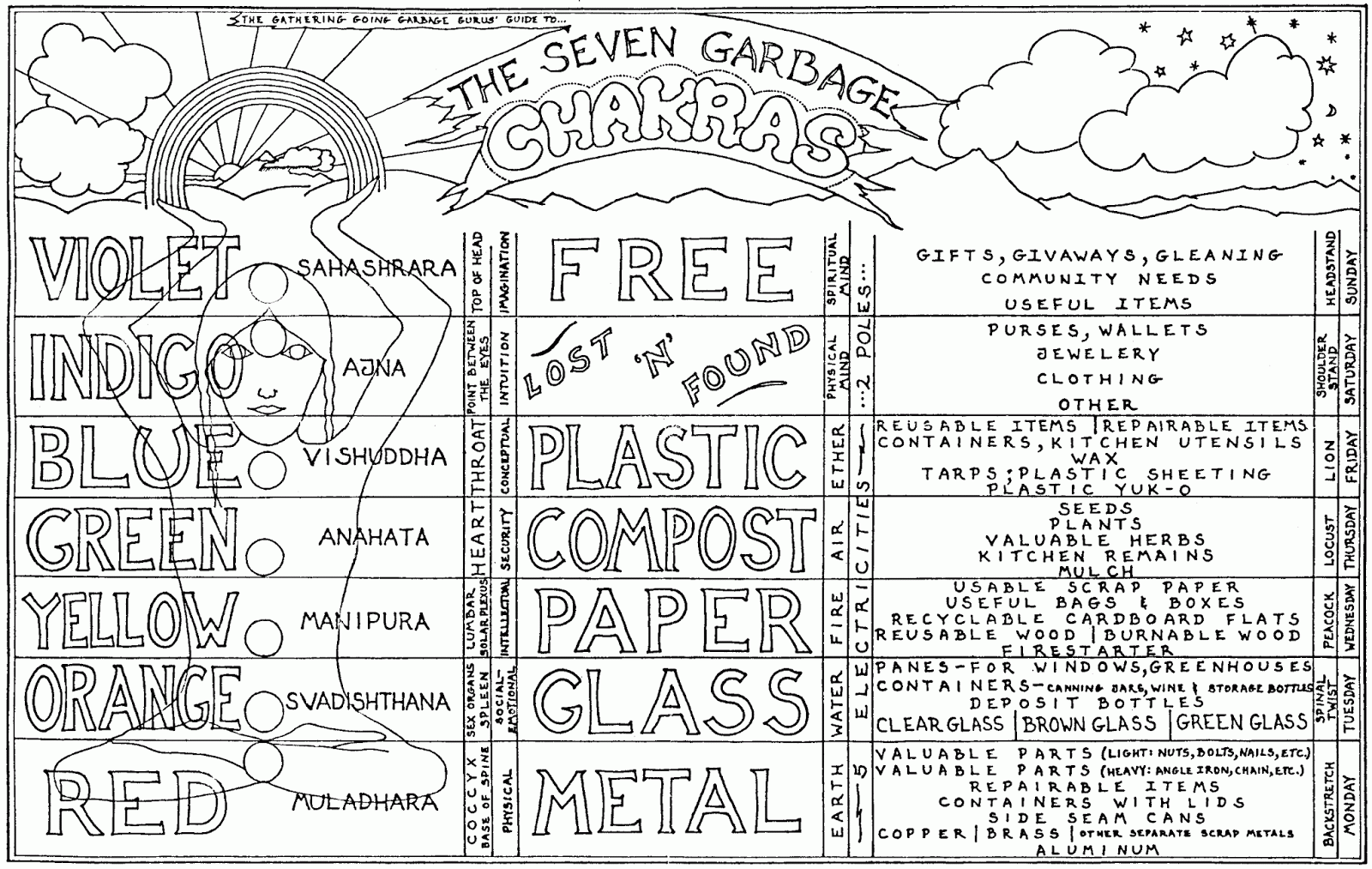 |
| Image Source |
 |
| Image Source |
We had a wonderful brother by the name of Dakota who for a number of years focalized recycling by sorting through a gigantic pile of trash left behind by less educated gatherers.
By 2004 or even a few years before, we handled recycling by hauling all the trash to a location in the parking lot and then dedicated volunteers would open every bag of trash and sort through everything, separating out anything we could take to an identified recycling center. In more recent hipstory, a wonderful brother named Dan D. took on the task of focalizing sorting and places to take the recyclables - but it was basically the same process. Depending on where we were located that could be plastic, paper, glass and metal or just aluminum cans. This method left much to be desired. Instead of every gathering participant doing their share of recycling and hauling trash a handful of people did it for everyone (bless you trash sorters - you are the best of this family - right up there with our shitter diggers).
 |
| Tennessee 2012 gathering trash pile with family sorting |
Then this year in Montana, most of the trash went straight to dumpsters (unsorted) and off to the dump. While we (the magic hat) paid the dump fee, this family has gone from recycling trendsetters to trash generators. Even burning paper in Montana in 2013 created a bear nuisance as the bears can smell grease on ashes for some time. After we left the gathering, some black bears moved in and dug up our pits.
So what are we to do?
Don't bring it in the first place. Don't bring cans, bottles, or plastic containers that you are not willing to take with you when you leave the gathering and take at least one hundred miles away from the gathering before you put it in a recycle container.
We are all the clean up crew. Anything you bring to the gathering, you are responsible for taking out of the woods including used tampons, used diapers, dirty clothes, broken tents, cigarette butts, bottles, cans, plastic containers, glow sticks, lighters, rope, tarps, etc.
So what can you leave behind? You can leave your and your pets' feces in a shitter, your toilet paper in a shitter, your urine in the woods, food scraps in a compost pit, and buried fire pit ashes. You can leave grey water (used water for bathing, washing dishes, teeth brushing, etc.) in a grey water pit at least 200 feet from creeks, rivers and ponds. No soap decomposes in water. Dr. Bronners or biodegradable soaps degrade in the soil and we want the micro organisms to neutralize the grey water before it hits the creek and makes wild animals in the area sick. For more info on low impact camping, visit Leave No Trace.
Now that the problem has been revealed, what are we going to do about it?
Some ideas (please add more):
- Education, education, education both before the gathering and at the gathering.
- Find out where the recycling centers are in the vicinity of the gathering during seed camp and keep the recyclables flowing to the center every few days.
- Don't leave everything inside the gathering until July 7 - take your trash and recyclables to your car every few days.
- Set up recycling stations around the gathering or in the parking lots from the start of seed camp.
Earth911
Natural Resources Defense Council
I Want To Be Recycled



